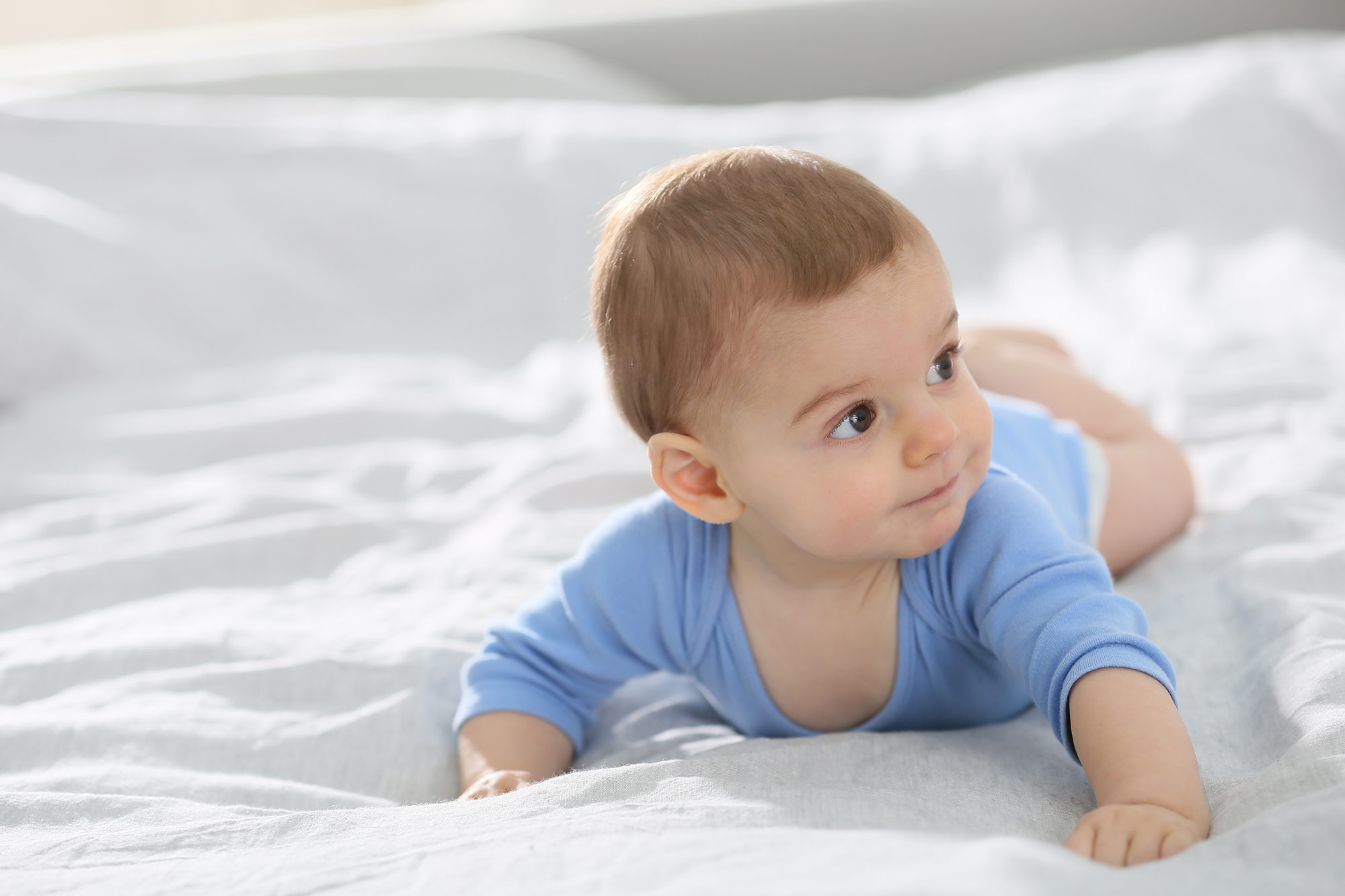
Goodluz/Shutterstock.com
THIS ARTICLE IS MORE THAN FIVE YEARS OLD
This article is more than five years old. Autism research — and science in general — is constantly evolving, so older articles may contain information or theories that have been reevaluated since their original publication date.
Some infants who are later diagnosed with autism have trouble holding up their heads or following objects with their eyes as early as 6 months of age. These findings from a new study suggest that early signs may augur autism before the disorder’s hallmark symptoms emerge1.
Researchers followed 210 infants whose older siblings have autism. These so-called ‘baby sibs’ are 20 times more likely to be diagnosed with autism than infants without a family history of the disorder.
The findings, published 16 July in the Journal of Neurodevelopmental Disorders, suggest that baby sibs who are diagnosed with autism show early developmental delays that predict the severity of their autism symptoms. The most severely affected children display subtle difficulties as early as 6 months.
“This is a really high-risk group,” says lead researcher Annette Estes, director of the University of Washington Autism Center in Seattle. “They deserve programs that can sort of walk along with them through this early developmental period and make sure that we’re catching things as they emerge.”
The researchers assessed the children’s behavioral and cognitive development using standardized tests and parent interviews when they were 6, 12 and 24 months of age. By 24 months, 49 of the baby sibs met the criteria for autism.
The researchers split the children with autism into two groups based on the severity of their symptoms. They then looked back at the children’s earlier test performances to see whether certain features track with autism severity.
Severity signal:
The children with the most severe symptoms scored lower on tests of motor and visual abilities at 6 months compared with 98 children of the same age without a family history of autism. These tests measure various aspects of a child’s development, from controlling the arms and legs to watching other people’s faces. At 12 months, these children showed difficulties with language and daily living skills, such as drinking from a cup.
Children with moderate autism symptoms achieved normal test scores at 6 months. But by 12 months, they showed subtle language delays.
At 24 months, children with either severe or moderate symptoms scored lower than the children without autism on questions about social skills, such as showing interest in others, during parent interviews.
Early visual and motor impairments could hint at general developmental delay that isn’t specific to autism, Estes says. Or, she says, these early differences may be part of autism’s “prodrome” — a set of symptoms that surface before telltale features of the disorder.
Either way, the early signs are not generally obvious enough for parents to pick up on. They emerge only on standardized developmental tests. “These aren’t kids that are showing frank, really concerning delays,” Estes says.
What’s more, the motor differences observed at 6 months disappeared by 12 months. Yet whatever is causing a child to miss the early motor and visual milestones may also disrupt social development, Estes says.
The results add to mounting evidence that subgroups of children with autism have diverging developmental trajectories. For example, in a study published earlier this year, children who scored lowest on tests of language and social skills at age 2 continued to show the most severe deficits a year later2.
Estes cautions against generalizing the findings beyond siblings of children with autism. But she says better understanding how autism unfolds in this high-risk group may help researchers to home in on the underlying mechanisms and refine interventions.
By joining the discussion, you agree to our privacy policy.